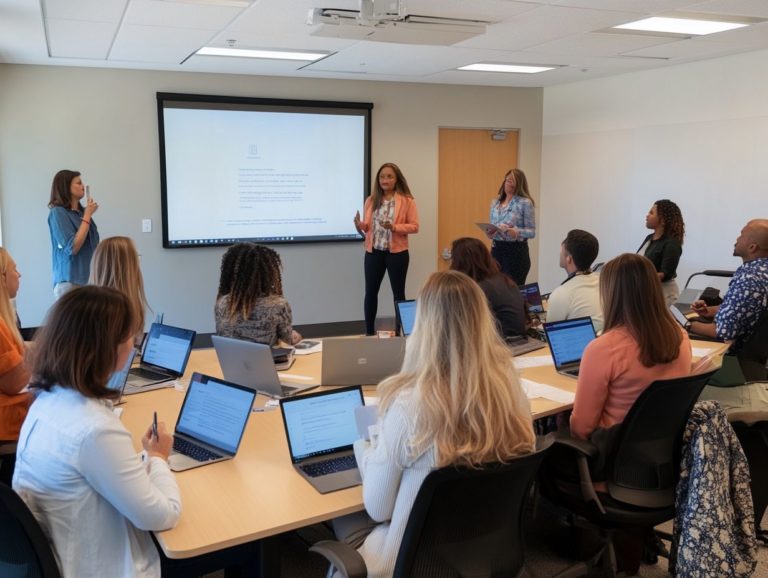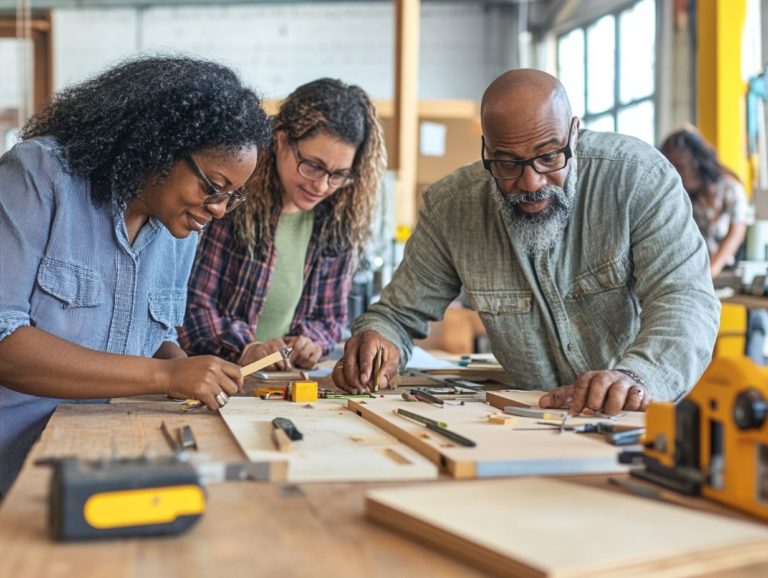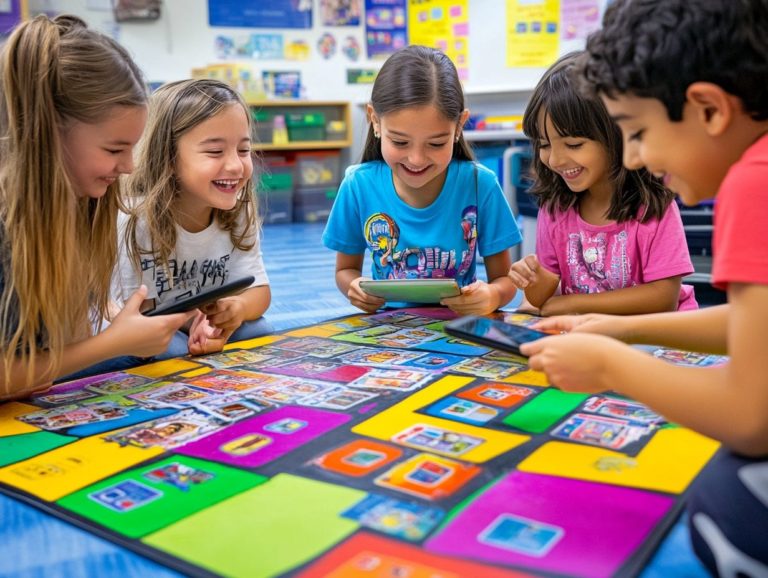How to Create a Peer Learning Community
Peer learning communities are vibrant spaces where you can come together with others to exchange knowledge, provide mutual support, and grow collectively.
This article delves into the essence of these communities, defining what they are and highlighting their numerous benefits. It guides you on building a solid foundation by identifying shared goals and establishing effective communication channels.
Creating a supportive environment is crucial. Get ready to discover powerful strategies for teamwork and conflict resolution within these pages. You will also discover tips for sustaining and expanding your community to create a lasting impact.
Engage with us to foster meaningful connections and enrich your learning experience!
Contents
Key Takeaways:

- Foster teamwork and feedback to create a supportive learning environment.
- Establish clear communication and accountability to build a strong foundation for the community.
- Sustain and grow the community by providing ongoing education and opportunities for expansion.
Understanding Peer Learning Communities
Peer learning communities serve as collaborative networks where teachers, educators, and students come together for shared learning experiences. These experiences are designed to enhance educational practices and improve student outcomes.
Within these communities, a culture of collaboration and continuous learning thrives. Knowledge sharing and collective inquiry are prioritized.
By actively engaging in these environments, you can explore diverse perspectives and exchange innovative teaching strategies. You can work toward common goals. This not only enriches your own educational practices but also contributes to a stronger educational framework and a supportive community.
Definition and Benefits
Peer learning is an exceptional educational approach where you engage collaboratively with others. This enhances your knowledge and skills, leading to improved achievements for both students and teaching staff.
This method opens the door to rich dialogue and shared experiences. It cultivates an environment filled with diverse perspectives. By facilitating teamwork, peer learning enables you to glean valuable insights from your colleagues practices, fostering your professional growth.
One of the key benefits is increased motivation. As a learner, you often feel empowered when you take an active role in your education.
When implemented through structured frameworks like collaborative inquiry, you can systematically explore various teaching strategies. Gathering meaningful feedback is crucial. For instance, watching each other teach, followed by reflection sessions, can serve as powerful tools to boost your teaching effectiveness. These practices nurture a culture of continuous improvement.
Building a Strong Foundation
To build a robust foundation for peer learning communities, you must establish common goals and values that resonate with teacher autonomy. This caters to the unique needs of diverse educators. This alignment cultivates a sense of belonging and paves the way for innovative strategies that enhance learning environments.
Identifying Common Goals and Values
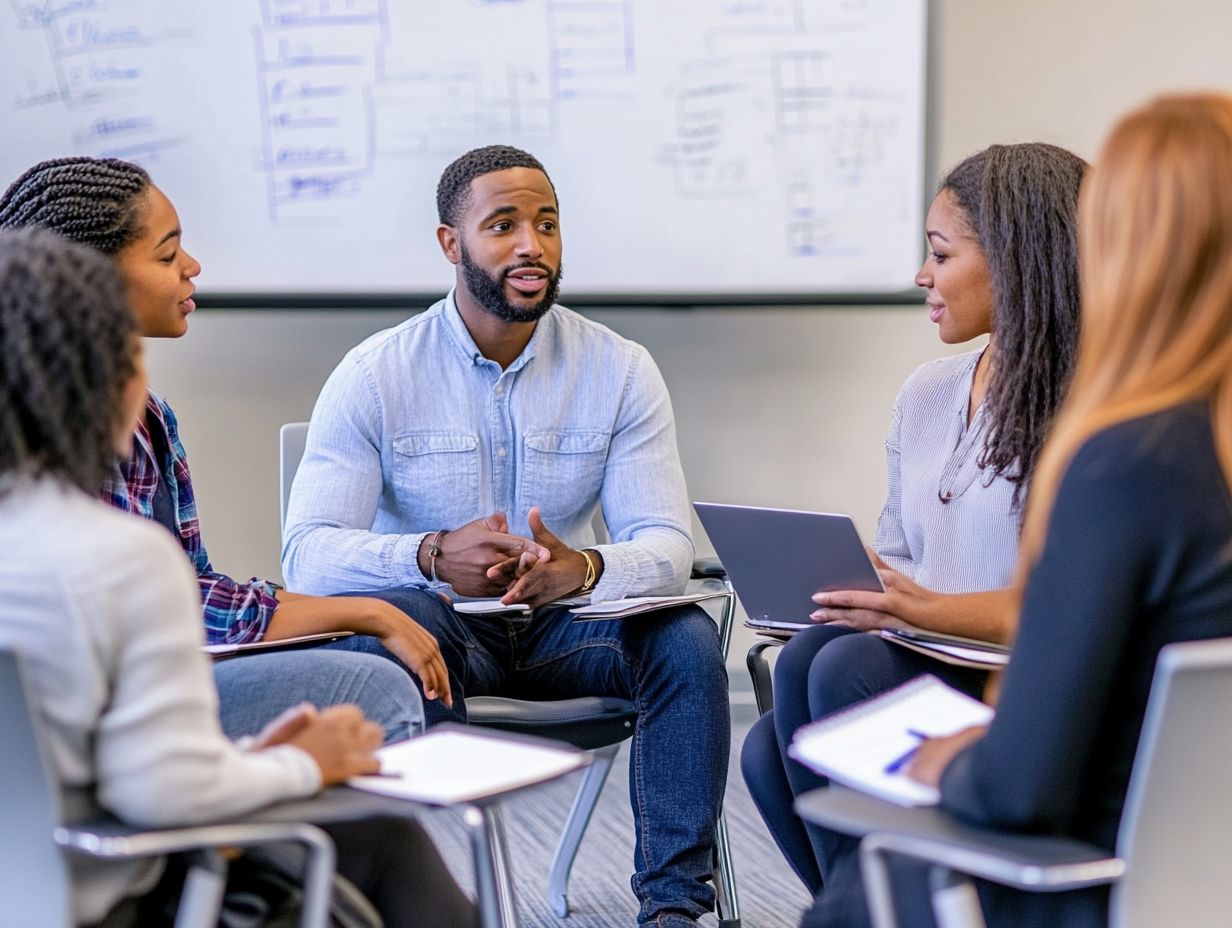
Identifying common goals and values is essential for fostering a cohesive learning culture within peer learning communities. This alignment allows you, as an educator, to effectively synchronize your objectives and collaborative efforts.
This alignment isn t just a box to check; it lays the groundwork for innovative ideas to thrive. You can explore various methods to uncover shared aspirations. Conducting workshops, surveys, and open forums can promote meaningful dialogue and reflection.
By engaging in sincere conversations about your visions for student success, you cultivate an environment where collaboration can truly flourish. These shared values bolster individual growth and elevate the collective educational experience. They pave the way for transformative practices that benefit both students and teachers alike.
Establishing Communication and Accountability
Establishing effective communication and accountability frameworks is crucial for ensuring that every member of your peer learning community is engaged and aware of their role in the collaborative process.
This means implementing a range of communication strategies that facilitate knowledge sharing and cultivate meaningful interactions among participants. Tools like discussion forums, regular check-ins, and group feedback sessions can sharpen clarity and encourage open dialogue.
Recognizing participation through structured feedback mechanisms not only motivates individuals but also reinforces a collective sense of responsibility. When members feel appreciated for their contributions, it boosts overall engagement and fosters a supportive environment that enhances learning outcomes, enriching the entire peer learning experience.
Creating a Supportive Environment
Cultivating a supportive environment within peer learning communities is essential for enhancing teacher collaboration. It gives you the power to give and receive helpful feedback while navigating healthy disagreements that may arise during discussions.
Encouraging Collaboration and Feedback
Encouraging collaboration and feedback among educators is crucial for fostering a culture of peer learning that enhances teacher autonomy and promotes innovative teaching strategies.
By establishing structured environments where you can share ideas and engage in reflective conversations, educational institutions create invaluable opportunities for growth. Facilitated peer observations, regular brainstorming sessions, and open forums provide platforms for exchanging helpful feedback and celebrating each other’s successes.
When you feel empowered to experiment with new approaches without the fear of judgment, it boosts your confidence and allows you to develop unique methodologies tailored to your students’ needs.
This dynamic interchange enriches the overall learning experience and cultivates a vibrant, supportive community of practitioners committed to educational excellence.
Addressing Conflicts and Challenges
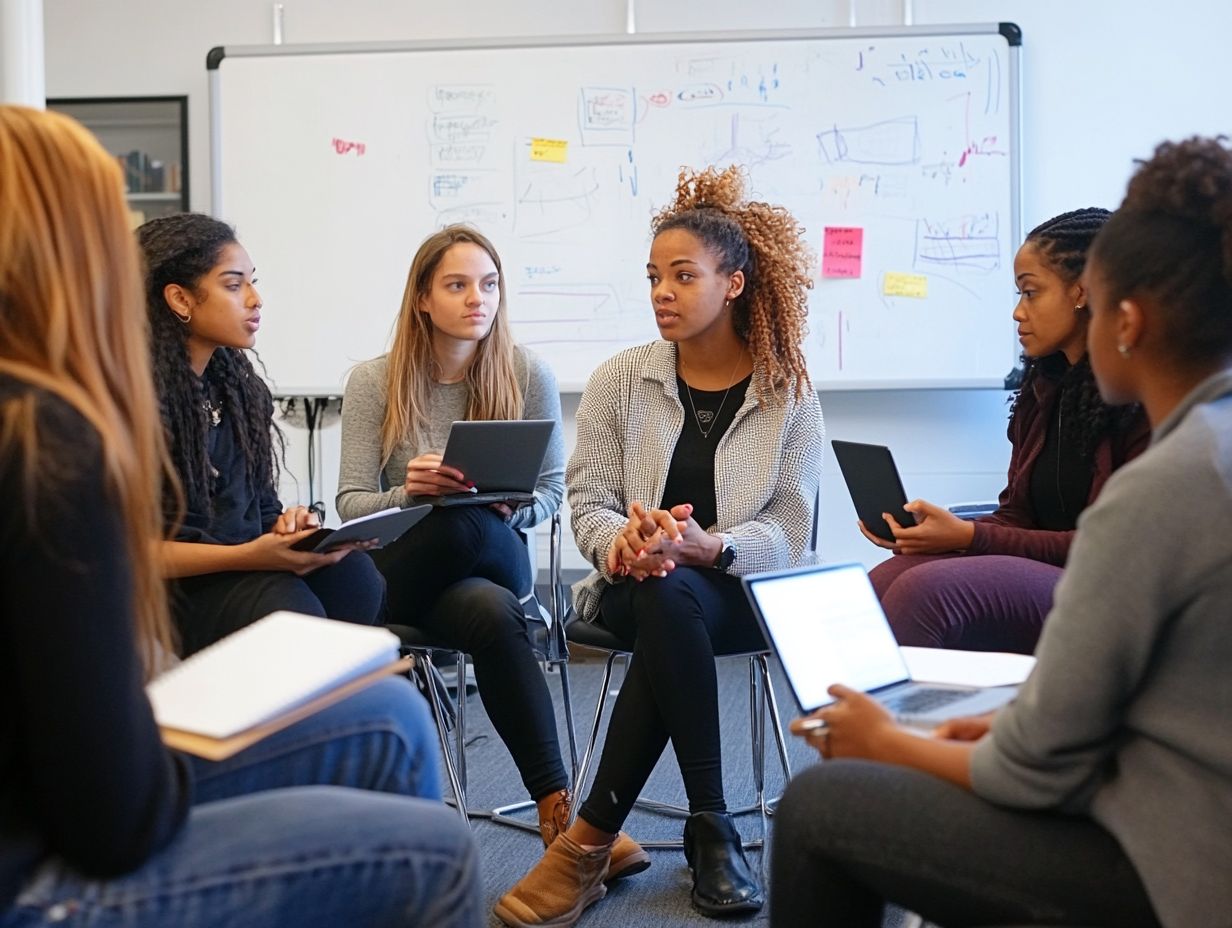
Addressing conflicts and challenges effectively is paramount in ensuring that peer learning communities remain productive and focused on enhancing learning experiences.
When you encounter differing opinions, varying levels of commitment, or misunderstandings, these issues can impede progress and create a contentious atmosphere. Both facilitators and participants must cultivate an environment that encourages open dialogue and helpful feedback. By emphasizing community support, you lay a strong foundation for resolving disputes amicably.
Regular check-ins and shared guidelines can help maintain alignment among members. Using strategies like active listening and empathy turns disagreements into opportunities for deeper understanding and collaboration, ultimately reinforcing the overarching objectives of the learning community.
Sustaining and Growing the Community
Sustaining and growing peer learning communities requires a commitment to continuous learning, cultivating mentorship opportunities, and developing scalable strategies designed for long-term success and engagement.
By actively investing in these elements, you can create a welcoming space that fosters collaboration and growth among participants.
Join us in building a thriving learning community!
Continuing Education and Growth Opportunities
Continuing education and growth opportunities are essential for sustaining vibrant peer learning communities. They allow you to enhance your knowledge and skills while benefiting from collective support.
In these dynamic environments, you can immerse yourself in collaborative workshops, attend professional development sessions, and engage in mentorship programs. These opportunities build trust among participants and empower you to share your experiences, challenges, and successes.
By embracing this shared wisdom, you not only expand your own skill set but also contribute to a richer learning atmosphere for your students.
The ongoing exchanges within these communities have the potential to inspire impactful changes in curriculum design and instructional methods, ultimately transforming educational experiences for everyone involved.
Expanding the Community and Impact
Expanding your peer learning community and amplifying its impact requires a set of strategic initiatives centered on group discussions and fostering social learning among educators and students.
By establishing platforms for regular interactions, these strategies enhance knowledge sharing and cultivate a sense of belonging among participants. Encouraging collaborative projects and open dialogues can pave the way for meaningful relationships, significantly boosting engagement levels.
Incorporating diverse perspectives through workshops or forums can spark critical thinking and innovative solutions. This collaborative environment allows individuals to feel valued, promoting a culture of respect for each other.
You and your peers will become more engaged in your learning journeys, collectively contributing to a vibrant, inclusive educational ecosystem.
Frequently Asked Questions

What is a peer learning community?
A peer learning community is a group of individuals who come together to learn from each other, share knowledge, and support each other’s growth and development.
Why create a peer learning community?
Creating a peer learning community allows individuals to access a diverse range of perspectives, receive support and feedback, and develop new skills and knowledge through collaborative learning.
How do I start a peer learning community?
To start a peer learning community, reach out to like-minded individuals, create a shared learning goal or topic, and consider how to leverage peer learning for skill development by establishing regular meeting times and formats.
What are the benefits of being part of a peer learning community?
Being part of a peer learning community can provide opportunities for personal and professional development, networking, and building relationships with others who share similar interests and goals.
How can I ensure a successful peer learning community?
To ensure a successful peer learning community, establish clear expectations, promote open communication and collaboration, and regularly assess and adjust the format and structure to meet the needs of the group.
What resources can I use to support my peer learning community?
There are several resources available to support a peer learning community, such as online platforms for virtual collaboration, facilitation guides, and tools for sharing and organizing information.
Join us in this journey of growth and collaboration!

